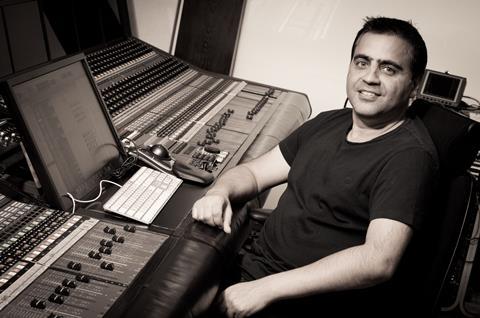Sound designer Raja Sehgal reveals the skill behind sound mixing trailers for six out of the eight Best Picture nominations.

When the Oscars are handed out on Sunday night, one of the unsung heroes will almost certainly be Raja Sehgal.
You may not have heard of him but the London-based sound designer worked on trailers for six out of the eight Best Picture nominations, helping rouse interest in cinemagoers to see The Theory of Everything and The Imitation Game among others - all through the subtle art of sound.
“There is a particular skill in creating the sound design for film trailers,” he says. “Building energy, drama and excitement between a minute and two-and-a-half minutes is a very different process than over two hours.”
Sehgal is based at Grand Central Recording Studios in Soho, the audio facility he co-founded with Carole Humphrey and Ivor Taylor some 20 years ago, working on the sound for award-winning ad campaigns such as Heineken’s Hero series and Nike’s Write the Future.
Grand Central moved into movies 10 years ago, sparked by an approach from Pathé, which wanted to improve the performance of their trailers.
“We took the expertise we have in mixing cinema commercials and began applying it to trailers,” says Sehgal, who first started at audio facility Silk Sound in 1981 (aged 17) after previously sitting in on his mother’s studio work - she was head of an Indian music label.
“It’s our job to make a trailer sound as big as possible in the cinema, to be as impactful as possible.”
Sehgal’s involvement with trailers first begins when creative agencies have delivered an edit, cleared by the studio and filmmaker.
“They’ve chosen the music track and the dialogue is in place,” he explains. “I’m then given the freedom to move the sound around in the cinema, adjust the amount of bass, decide how loud the music should be and equalise the dialogue to get the best impact.”
This dialogue could be “a whispered line” in the feature, which has to cut through in a trailer packed with music and action.
Tricks employed to grab the attention of cinemagoers include working with surround sound and the subbass. “We want them to hear the ‘booms’, but also hear the dialogue at the same time,” says Sehgal, adding that Grand Central is one of the first to mix trailers in Dolby Digital and 3D.
“But it can’t measure over 85Leqm, (a measurement of perceived loudness over time),” he cautions. “In a feature, levels are not restricted in any way, but trailers are limited to 85Leqm (commercials are 82Leqm).
“The art is getting all that impact without making people’s ears bleed.”
Sehgal’s latest work involved sound mixing a dozen promos for the Berlin Film Festival, with many major projects being pushed at the recently concluded European Film Market (EFM) before the features are even finished.
“Sound can make a scene,” he says. “You can take a scene in a forest, put a deep drone on it and it becomes a horror. Put birdsong on it and it becomes a summer’s day.
“The challenge comes when you need to get rid of the sound on set, from a hum to a snow machine or wind machine. You have to make sure people can’t hear all that stuff.”
Working on so many trailers, from the likes of civil rights drama Selma to animated feature The Boxtrolls and family film Paddington, Sehgal has to take a moment between jobs. “I have to clear my mind. Move on. Do something fresh.”

























No comments yet